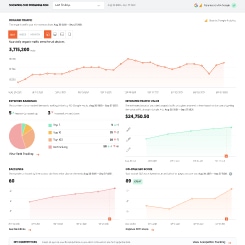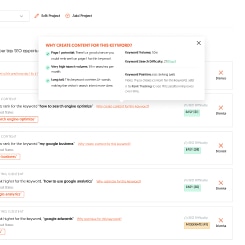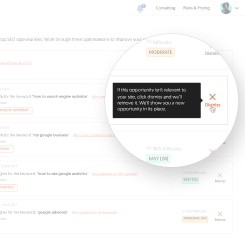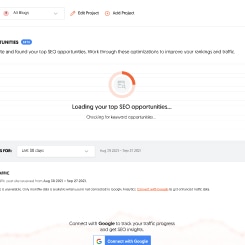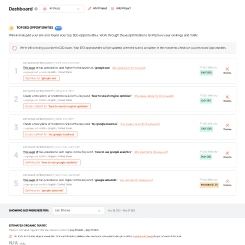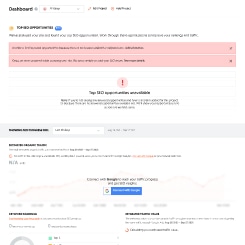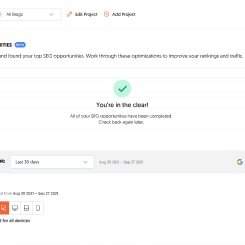WORK
SEO Opportunities
Ubersuggest Webapp Automated SEO Tasks
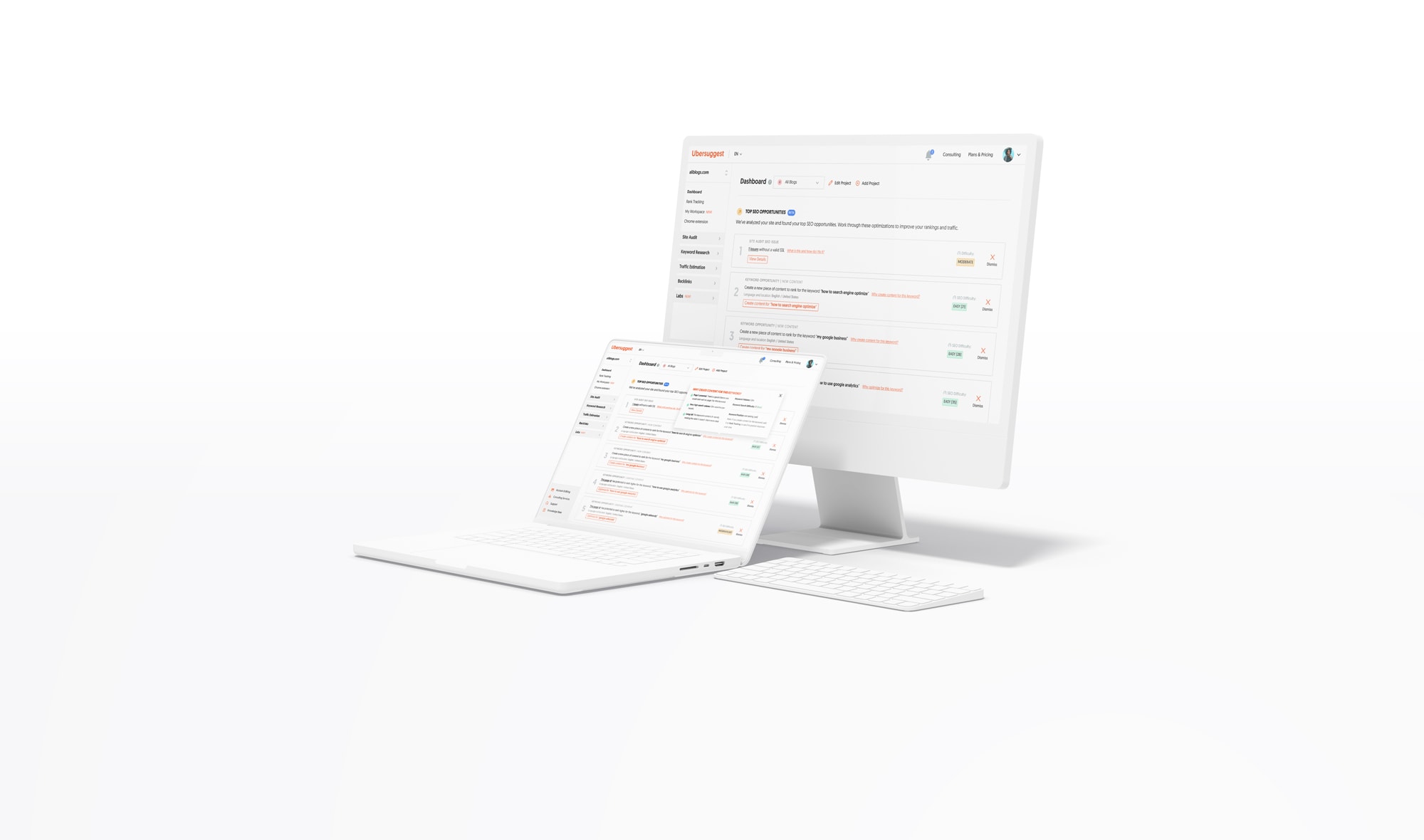
MEDIUM
UX, UI
DELIVERABLES
Product/Webapp
PROJECT ROLE
Product Designer
Project overview:
Primary Target Segment:
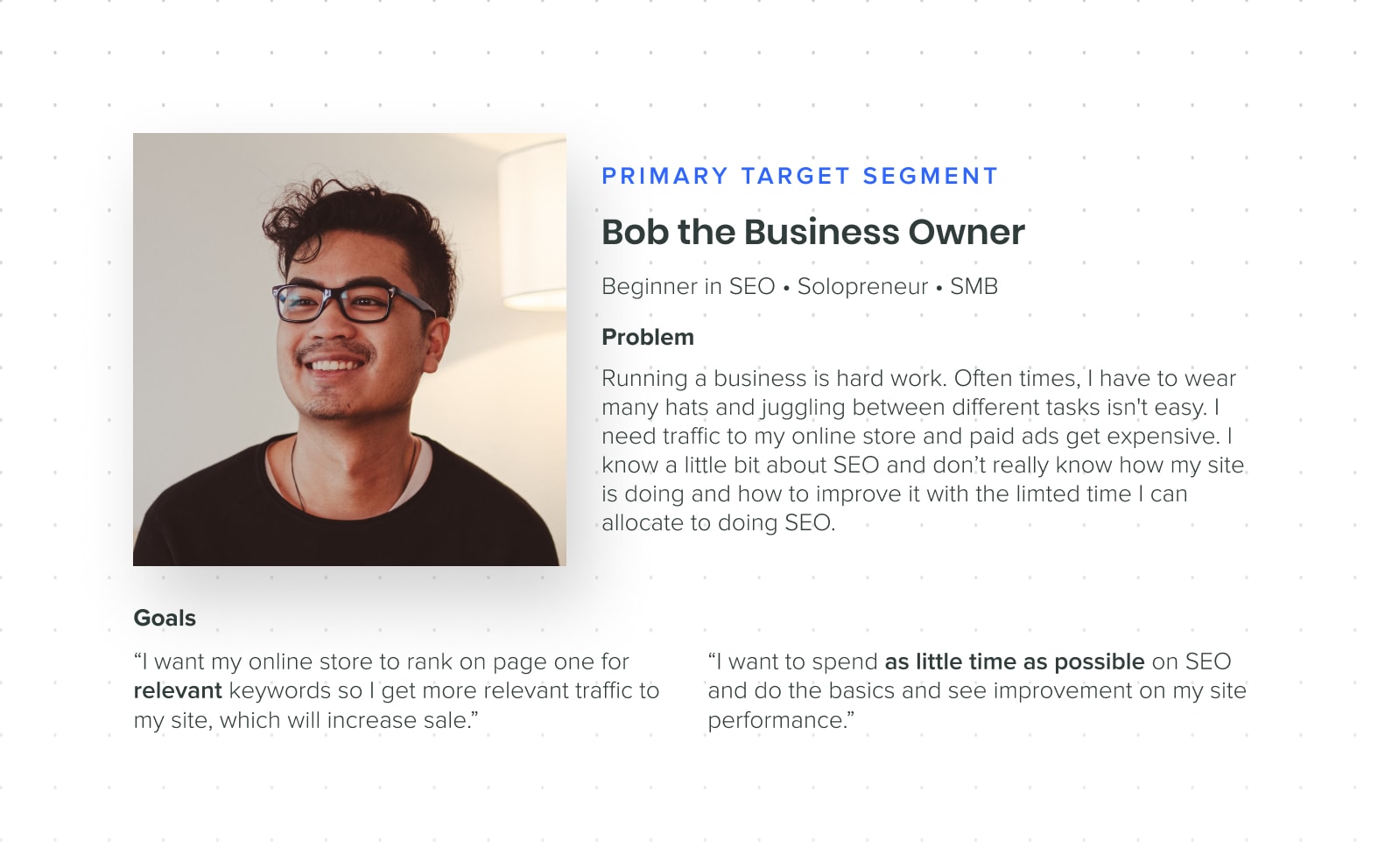
Customer Problem:
“I don’t have a clear path to accomplishing my goal of growing my traffic.”
“I don’t understand what SEO work I need to do and in what order to grow my traffic in the most effective way.”
“I have a hard time finding target keywords that are both relevant and achievable to my business.”
“I don’t know what content I should be creating.”
Business Problem:
The product lacked stickiness, as the average customer tenure was only 4 months. Ubersuggest was primarily a research tool that could be used for a few weeks or months to complete all of the research needed for a website.
Opportunity Signal:
There was a huge opportunity with customers like Bob because the market didn’t serve SEO beginners. Other SEO tools (our competitors) are mainly used by people who do research and get data in a robust way, as well as monitor the performance of their sites and their competitors’ sites. Not to mention, most of those tools were at a much higher price point.
Creating a way for customers to get more consistent value over time is a big opportunity for improving retention. Our customer tenure is 4 months which isn’t long enough for users to grow their traffic in a significant way.
How might we facilitate users to quickly determine and prioritize their most impactful SEO tasks?
How might we help users find relevant and achievable keywords to optimize existing or create new content for?
Hypothesis:
By automating the manual process of an SEO workflow for our less experienced SMB customers, it can trigger a habit loop, increasing the number of users that find repeated and consistent value in the product.
Opportunities & Improvement:
We first released an MVP of the feature that used existing functionality. It suggested target keywords optimization opportunities and top SEO issues to our customers in separate sections of the dashboard.
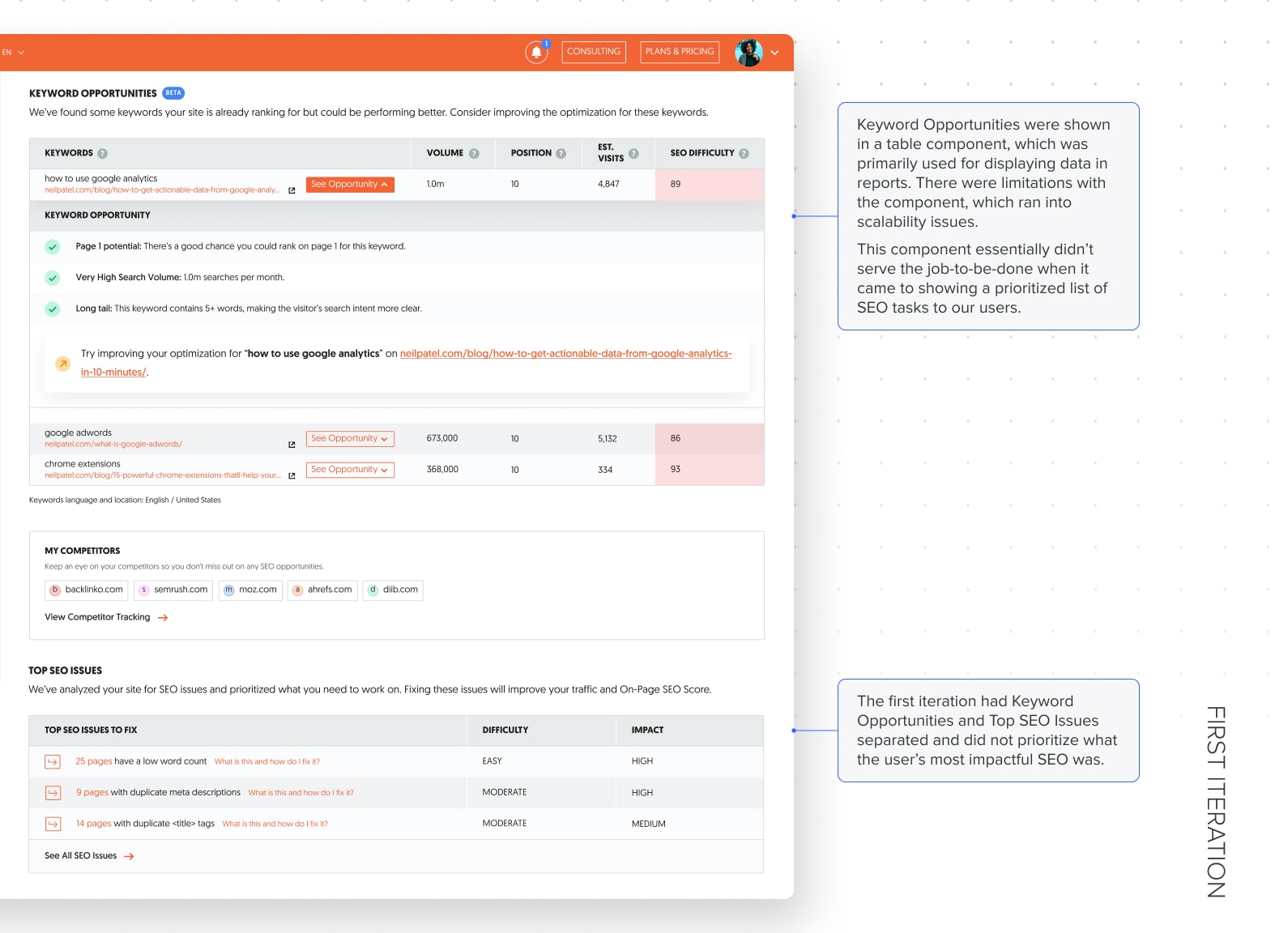
Objectives/KPIs:
- Objectives:
- Make the SEO journey ahead easier to digest and understand for Bob.
- Help customers build a habit of coming back to start a new SEO task.
- KPIs:
- Because there’s no baseline, we wanted to gather signals on the feature adoption and its average repeated usage.
- Increase customer tenure by 8+ months
Design process:
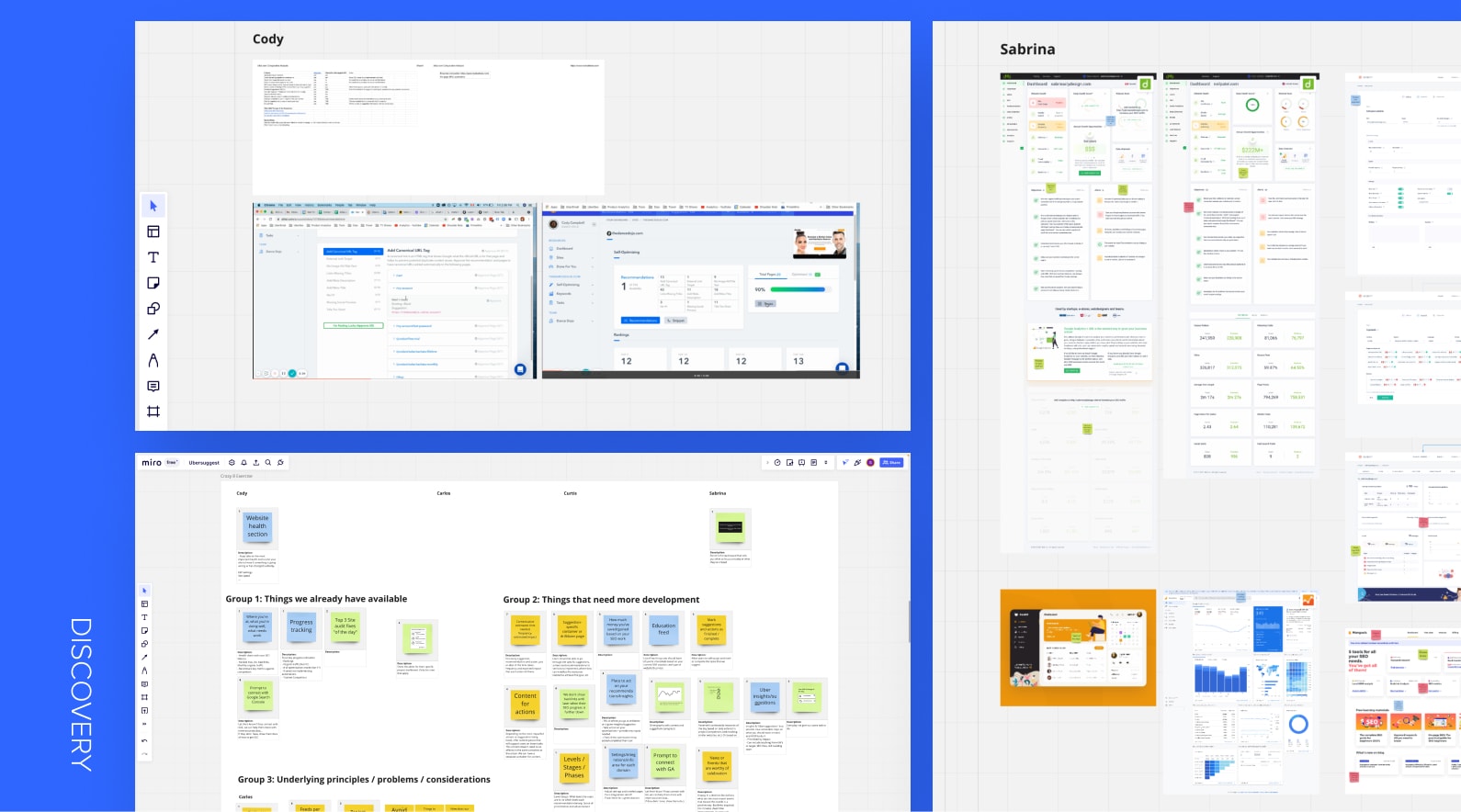
Discovery
Market Research, Competitive Analysis, Crazy 8 Exercise
Before facilitating a Crazy 8 brainstorm exercise with the team, I asked everyone involved to prepare for the exercise by gathering some references from other tools, including our competitors.
I facilitated a Crazy 8 exercise with the product team and our Director of CS. We presented our reference research as an inspiration before the exercise. Once everyone has presented their ideas, I worked with the product manager to consolidate the ideas and planned for the feature roadmap.
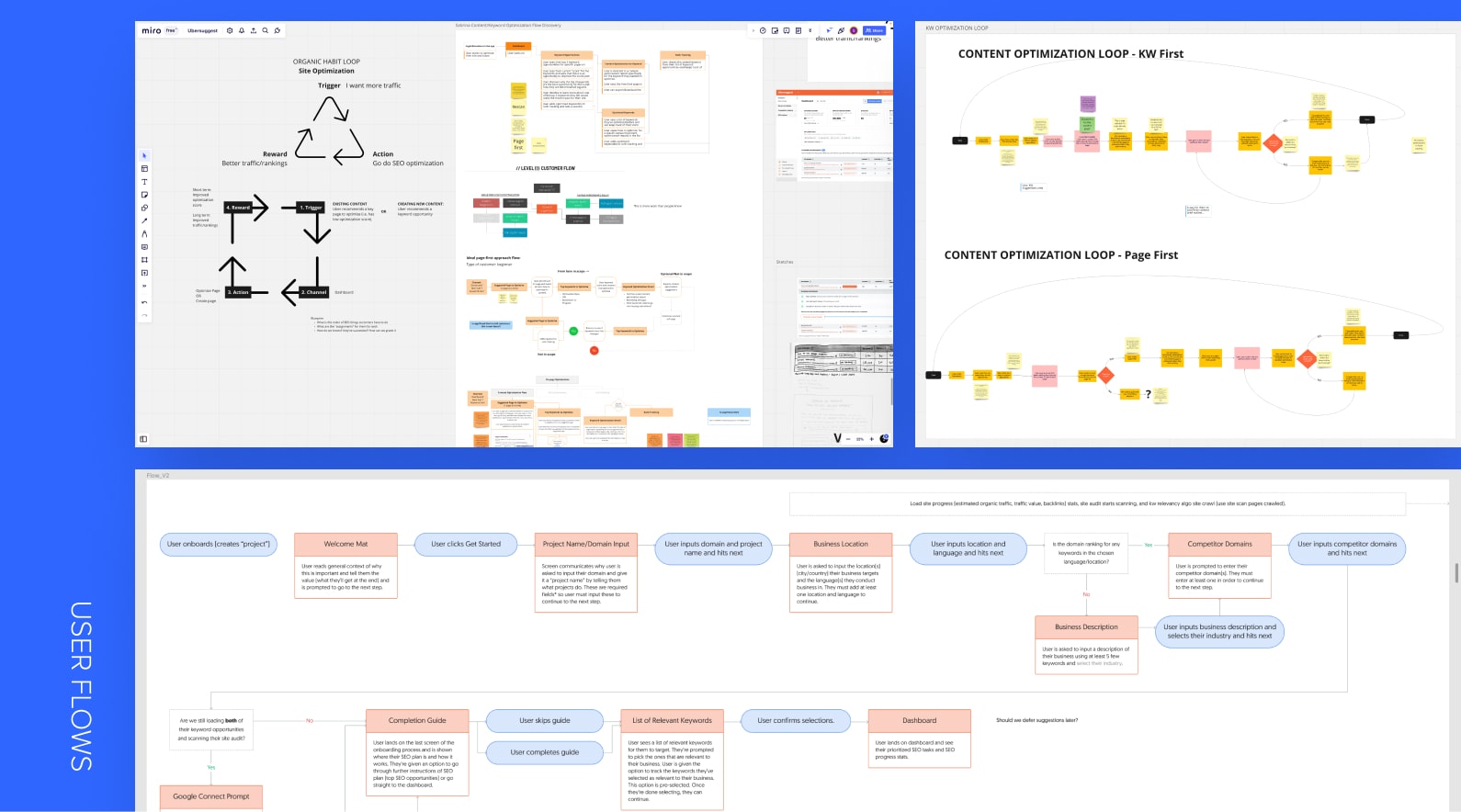
User Flows
From the ideas gathered from the exercise and jamming more with the product manager, I developed various user flows that reflected our discussion, with the consideration of the feature’s IA. I then presented them to the PM and Director of Engineering (also a Data Scientist).
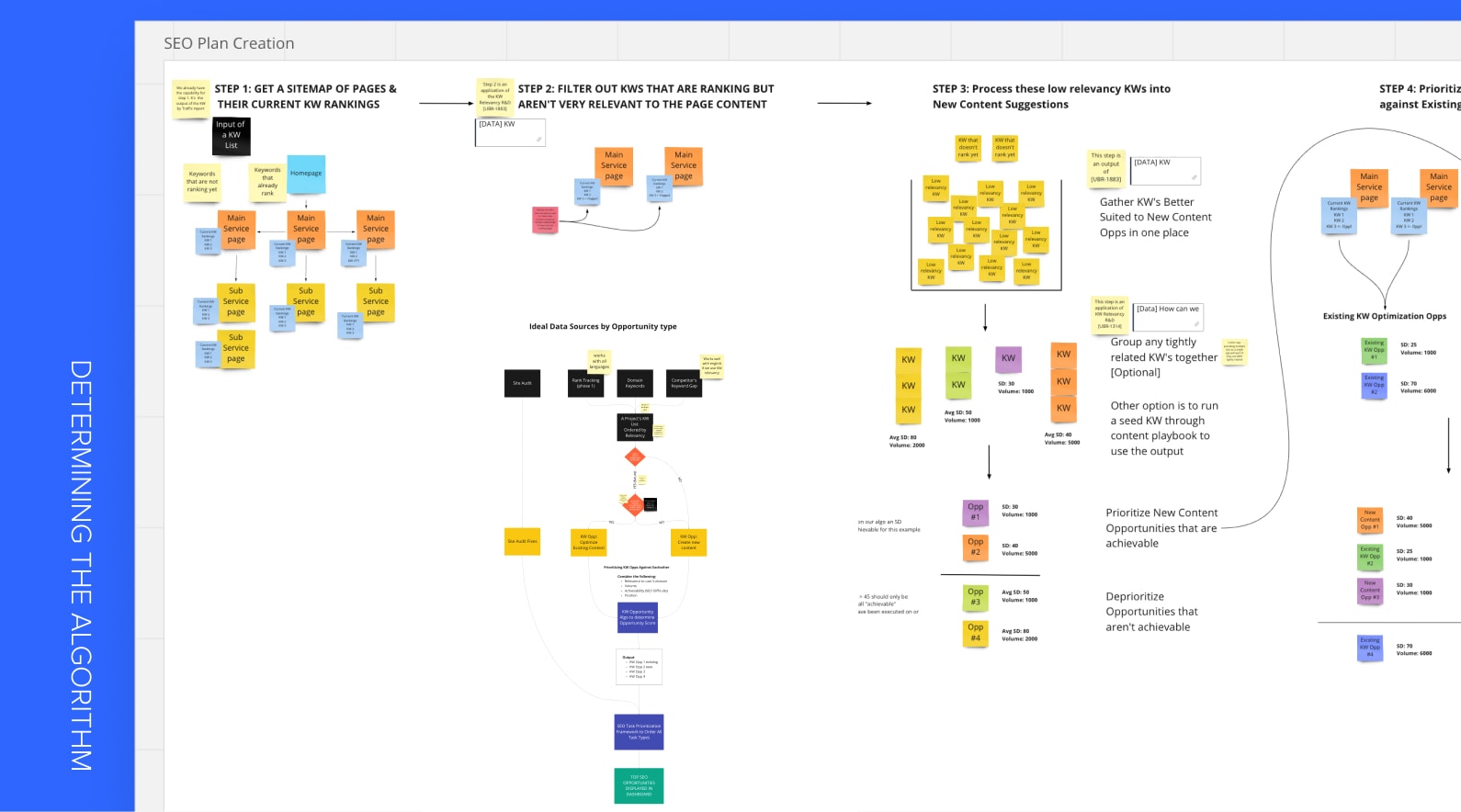
Determining the Algorithm
The Product Manager, the Director of Engineering, and I discussed the flow and brainstormed what the algorithm for prioritizing relevant keywords could be. We came up with a “dumb” version and decided to first ship it as an MVP, while the Director of Engineering explored using NLP to develop the actual algorithm on the side.
The Director of Engineering tested three different types of NLP API endpoints—Google’s API, Open AI (an open-source artificial intelligence API), and one from scratch. The primary considerations when deciding between the three were the load time and the accuracy of the output. We found that while Open AI had the fastest load time, the one that was done from scratch had the most accurate results with only a slightly longer load time. Therefore, we decided to implement that algorithm into the feature when it was ready in a future sprint cycle.

Sketches & Exploration
We discussed the flow and brainstormed what the algorithm for prioritizing relevant keywords could be. We came up with a “dumb” version for MVP, while the Director of Engineering explored using NLP to develop the actual algorithm on the side.
I started exploring some high-fidelity designs. I drew UI inspirations from references that provided recommendations on dashboards. I designed different versions that included an ideal experience and presented them to the PM and engineers. We discussed the feasibility of the designs and broke it down to ensure it was the scope of a sprint. The PM and I then mapped out the complex functionalities into the feature roadmap.
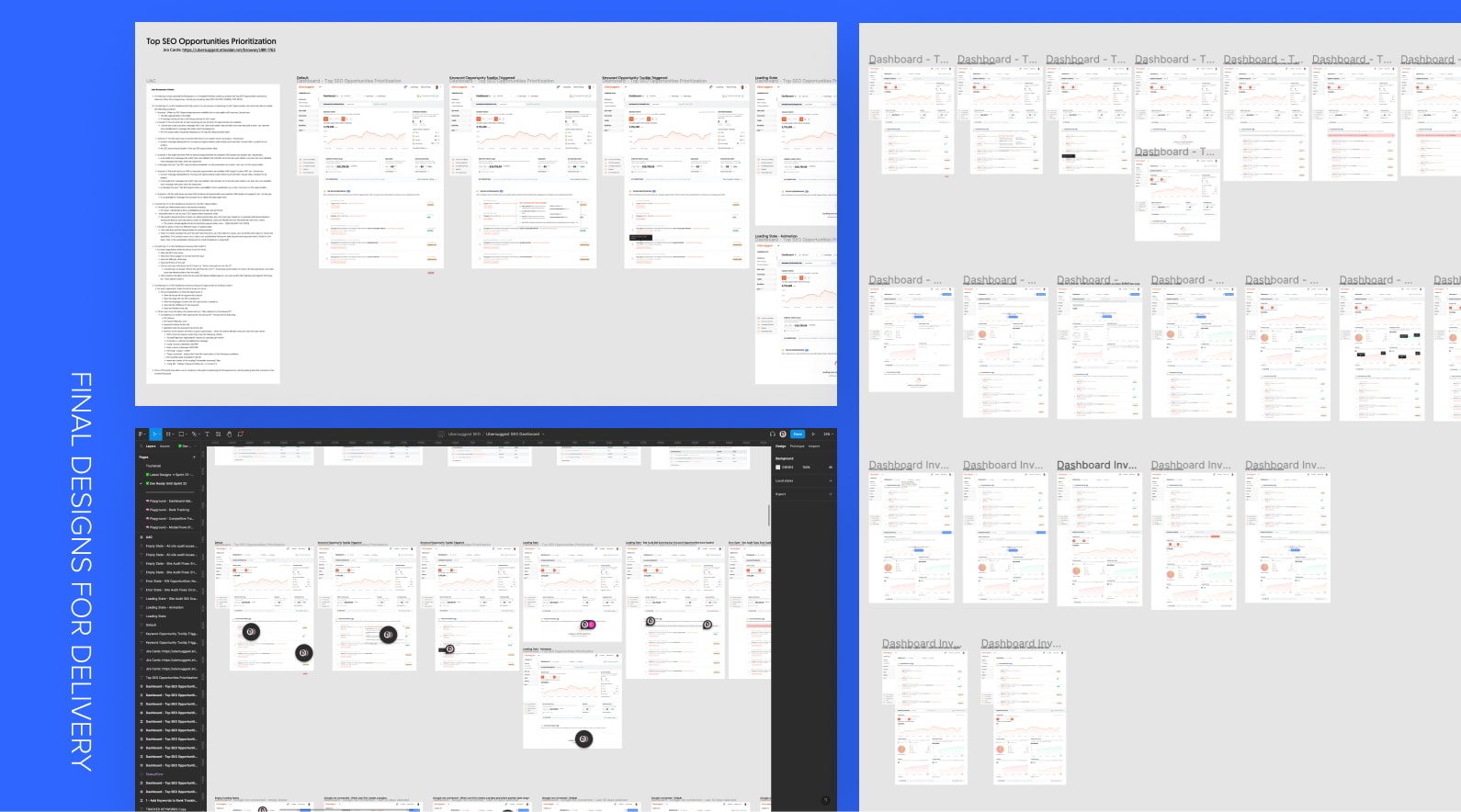
Final Designs for Delivery & Continuous Improvements
I finalized the design based on the team discussion and prepared it for delivery. To confirm that nothing was missing, I pasted the acceptance criteria on Figma and cross-referenced it with the design. I worked with the PM to ensure every acceptance criteria was included and identified the behaviours to track. I also identified all of the different states and edge cases in the design and added developer notes.
The feature had an iterative delivery process. We gathered signals and customer feedback from each iteration and continuously made incremental improvements to the feature and tracked the feature adoption.
Outcome:
Result & Performance Metrics
We tracked the usage of the SEO Opportunities feature against our segmentation data, which is based on different customer attributes such as SEO beginners and SEO experts. While SEO Opportunities was primarily for Bob (SEO beginner, small business owner), we found that many SEO experts also engaged with this feature.
SEO Opportunities Clicked by Beginner Solopreneurs (Bob):
33%
Engaged with an SEO opportunity
7.08
Clicks per user on average
SEO Opportunities Clicked by SEO Experts:
41%
Engaged with an SEO opportunity
7.16
Clicks per user on average
This feature, specifically keyword opportunities, is also a trigger in the product that leads users to another feature, the AI Writer. The AI Writer uses AI to automatically write content based on a given keyword. In the flow, the suggested keyword opportunity from SEO Opportunities will direct the user to the AI Writer and content will be generated based on the keyword suggestion. The user can then return to their dashboard and track their SEO progress to see if their site’s SEO metrics have changed based on the changes they’ve made. From clicking a keyword opportunity to saving a document in the AI Writer flow, we found that there was a 14% completion rate.

